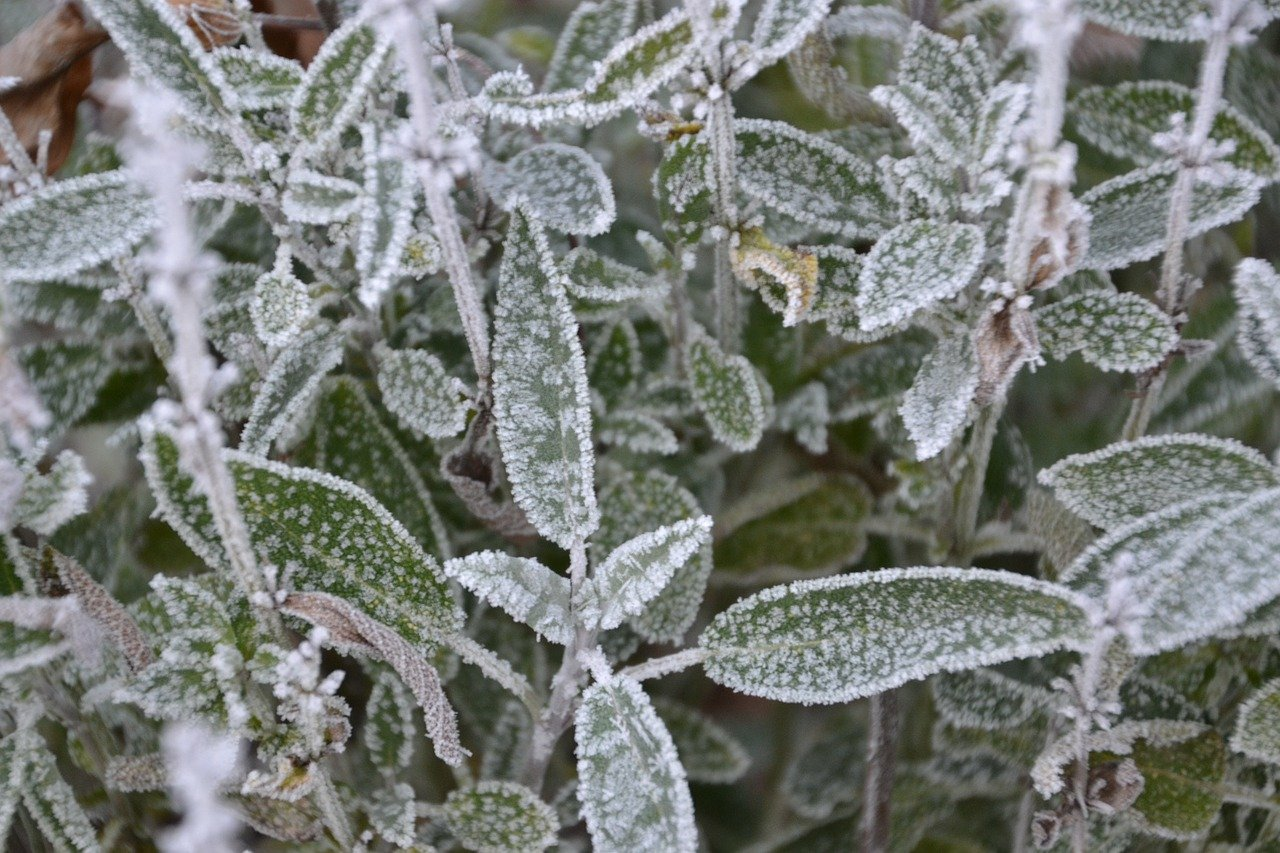
Overwintering Plants: Tubs, Pots and Raised Beds
Many plants get through the winter well because they are adapted to cold climates. Other plants cope less well with cold temperatures and short days. But what is the reason for this difference? Find out here what you need to consider when overwintering plants in pots and (raised) beds.
This Article Contains:
- Hardy Plants for Balcony & Garden
- Perennial and Annual Plants
- Overwintering Perennial Plants: Winter Protection and Frost Protection
- Winter-Hardy Potted Plants Overwinter
- Overwintering Herbs: What You Need to Know
- Wintering Mediterranean Plants: Citrus Trees, Fig Trees & Co.
- Excursus on Cold-Sensitive and Hardy Plants:
- Frequently Asked Questions About Overwintering Plants
Quick Overview
Perennial, Hardy Plants
- Hardy plants that can overwinter in the bed: Artichoke, wild rocket, Jerusalem artichoke, rhubarb, perennial cabbage, asparagus, horseradish
- Perennial hardy container plants: Wild rocket, Jerusalem artichoke, perennial cabbage
- Herbs that can overwinter in the bed with winter protection: rosemary, thyme, sage, oregano, lavender
Herbs That Overwinter Indoors or Go into Hibernation
- Herbs that go dormant in winter and sprout again in spring: chives, mint, lemon balm, lovage, tarragon
- Non-hardy herbs that overwinter indoors: Basil, lemon verbena
Hardy Plants for Balcony & Garden
Some plants get through the cold season better than others. These specialists have developed special techniques to avoid freezing to death. It is not so easy to classify them as hardy or merely cold-sensitive. For all those who want to delve a little deeper into the subject, there is a short excursus at the end of the article.
What Does Hardy Actually Mean?
If a plant is hardy, this means that it can generally withstand lower temperatures. However, this does not mean that all parts of the plant will survive. For example, the shoot can die in the fall and sprout again in the spring. In Germany, there are so-called winter hardiness zones (WHZ). These can be graded from cool alpine areas (=5b) to the warm Rhine Graben (=8a). However, they are only a rough guide, as there are also so-called microclimate zones within the WHZ. Different climates can develop in relatively narrowly defined environments. For example, it is warmer around a lake or pond in the fall, especially at night, as water cools down more slowly than air. In spring, however, it is cooler there for longer, as water also takes longer to warm up than air. A milder microclimate can also prevail on wind-protected house walls. Hedges or mounds (beds) can also provide protection from cool easterly or northerly winds.
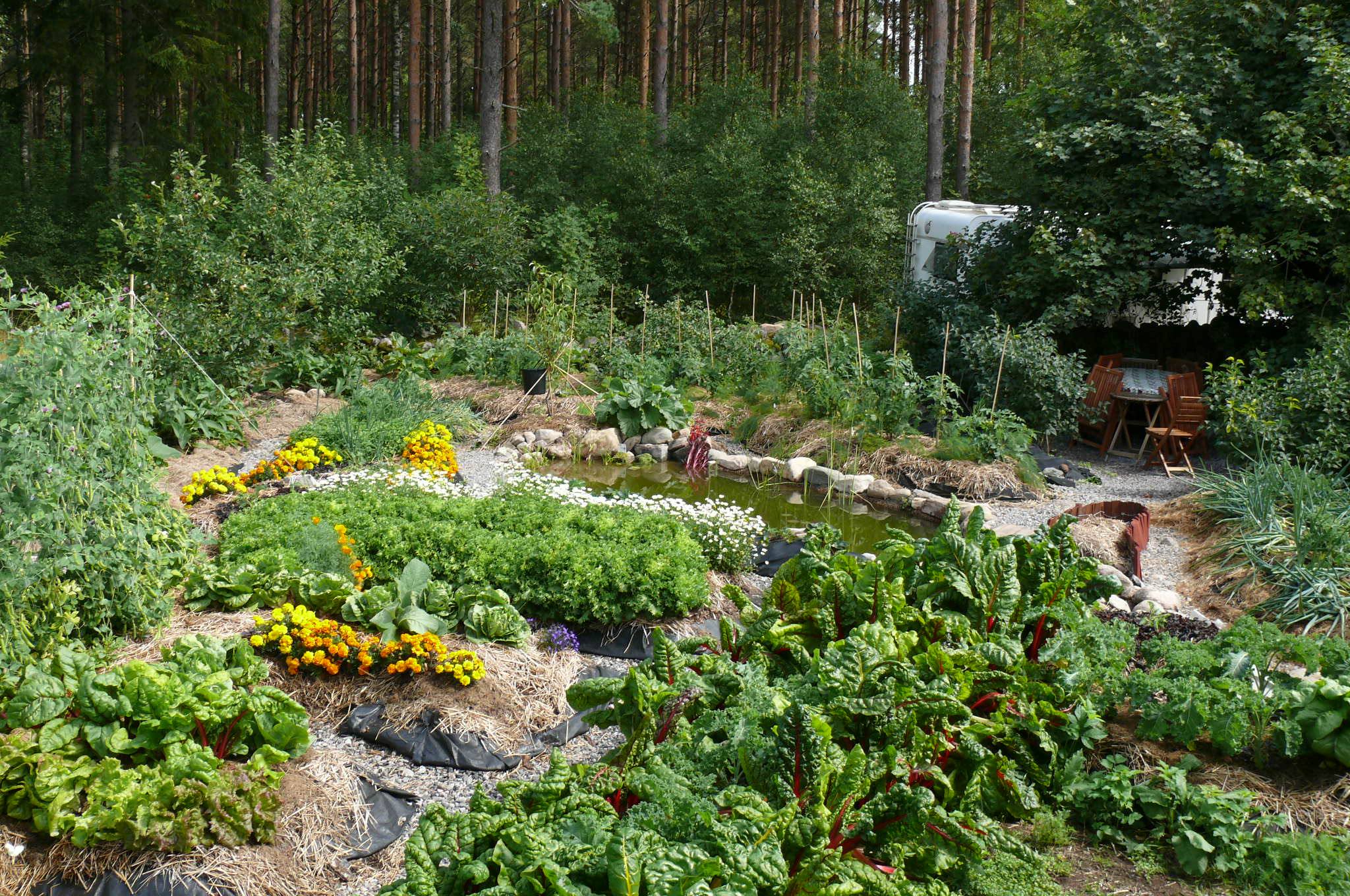
Perennial and Annual Plants
Some plants are perennials, which means that they survive the winter as evergreen perennials or in survival organs (roots/rhizome, pruned shoot/stem). Other plants reseed themselves after flowering and then germinate again the following year. If the mother plant dies after flowering, the plants are referred to as annuals. However, the death of the mother plant can also be caused by drought or frost.
This article is therefore primarily about overwintering perennial plants. Certain vegetables, such as various types of cabbage, leeks, parsnips or sugar loaf, are frost-hardy and can therefore be harvested throughout the winter. This technique is known as "live storage in the field". Other crops such as lamb's lettuce or winter purslane even need cool temperatures to germinate or thrive. The latter are thus truly hardy, as they can still grow at cold temperatures. If you are interested, you can find more information about Growing Vegetables in Winter here.
Overwintering Perennial Plants: Winter Protection and Frost Protection
Here are some perennial plants for growing in the garden that can also overwinter in the bed with the right winter and frost protection measures:
- artichoke
- wild rocket
- jerusalem artichoke
- rhubarb
- everlasting cabbage
- asparagus
- horseradish
Overwintering the Artichoke: Overwintering the Mediterranean Plant
Although the Mediterranean plant is perennial, it should be sufficiently protected from frost. To do this, cut the shoots back to approx. 10 - 20 cm/3.9 - 7.9 in and cover them with a thick layer of mulch (approx. 20 cm/7.9 in) made from straw or brushwood. You can pre-grow the artichoke from February and plant it out in mid-May. It can be sown directly into the bed from April.
Overwintering Rhubarb
The perennial knotweed can remain in one place in the bed for up to 8 years. In the fall, the above-ground part of the plant dies back and sprouts again in the spring. It can then be harvested in summer. Most rhubarb varieties are planted from spring to fall.
Overwintering Jerusalem Artichokes Outdoors
The edible, potato-like tuber reproduces all by itself through underground rhizomes. To prevent the plant from taking over the whole garden, a root barrier should be placed around the plant. The rhizomes grow best in loose, sandy and nutrient-rich soil. The tubers can be buried in the soil either in spring (March to April) or in fall (October to November) like potatoes. Additional compost in the planting hole helps the tubers to grow and sprout. By the way: As long as the soil is frost-free, you can harvest Jerusalem artichoke tubers all year round!
Overwintering Wild Rocket in the Bed: How to Do It
Considered a wild type of rocket and is extremely robust. It is also ideal for filling gaps in the bed. It thrives best next to lettuce, celery, strawberries and purslane. It should not be planted next to other cruciferous vegetables (cabbage, radish, radishes, etc.). It can be sown outdoors from April to August.
Overwintering Perennial Cabbage: Winter-Hardy Perennial Plant
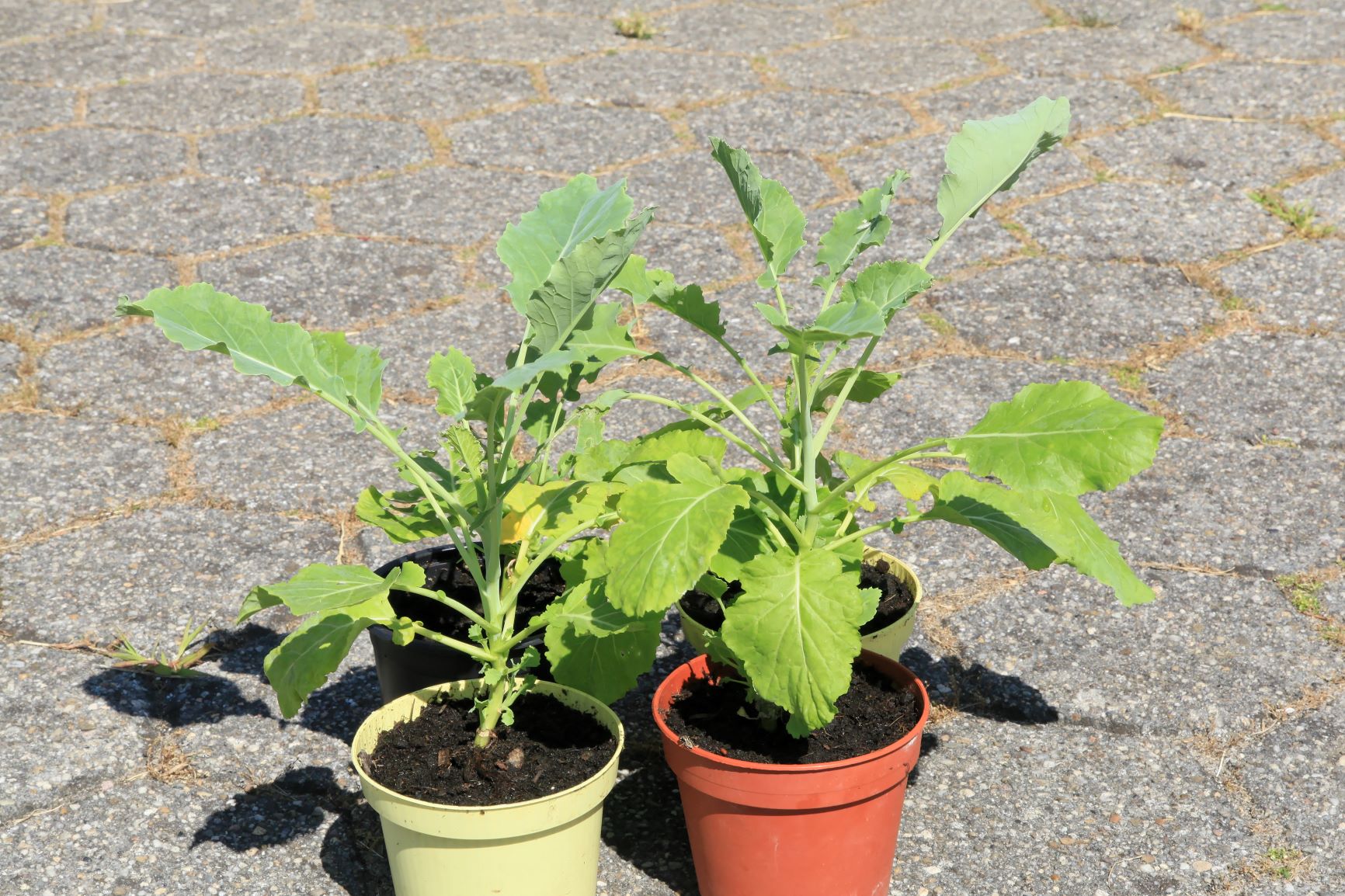
You can harvest this type of cabbage almost all year round. However, you should give the cabbage a rest if there is a heavy frost. The leaves have a similar taste to pointed cabbage. Like all types of cabbage, perennial cabbage grows best in nutrient-rich soil (compost, organic fertilizer) and does not do well in mixed cultivation with other types of cabbage. Borage, tomatoes or celery, on the other hand, combine well with cabbage. As the perennial cabbage only flowers every 15 years or so, it is propagated by cuttings. These can be planted out in spring and summer. Unlike other types of cabbage, it remains in the same place for several years.
Overwintering Asparagus
This coveted vegetable can overwinter in its rhizome in the same location for up to four years. To ensure that this works well, the dried up herb is cut off just above the roots in November. The following year, a mound of soil is then built up for white asparagus. This step is not necessary for green asparagus. Asparagus is best planted in April or May. Good intercropping partners are: Dill, parsley, lettuce, marigolds, peas and beans.
Overwintering Horseradish
The rhizome planted in the fall can be harvested over the winter after 2 years of growth (October to March). The daikon can spread from one place over several years. Here too, a root barrier prevents uncontrolled spreading. The daikon does not get on well with other cruciferous plants such as cabbage. Good partners are: Potatoes, lettuce, tomatoes, carrots, parsley, fennel and dill. Horseradish also thrives under fruit trees.

Any Questions?
To exchange ideas with other gardeners and benefit from their experience, you can visit our Fryd community. Maybe someone has already overwintered perennials and can give you some tips.
Join Our CommunityWinter-Hardy Potted Plants Overwinter
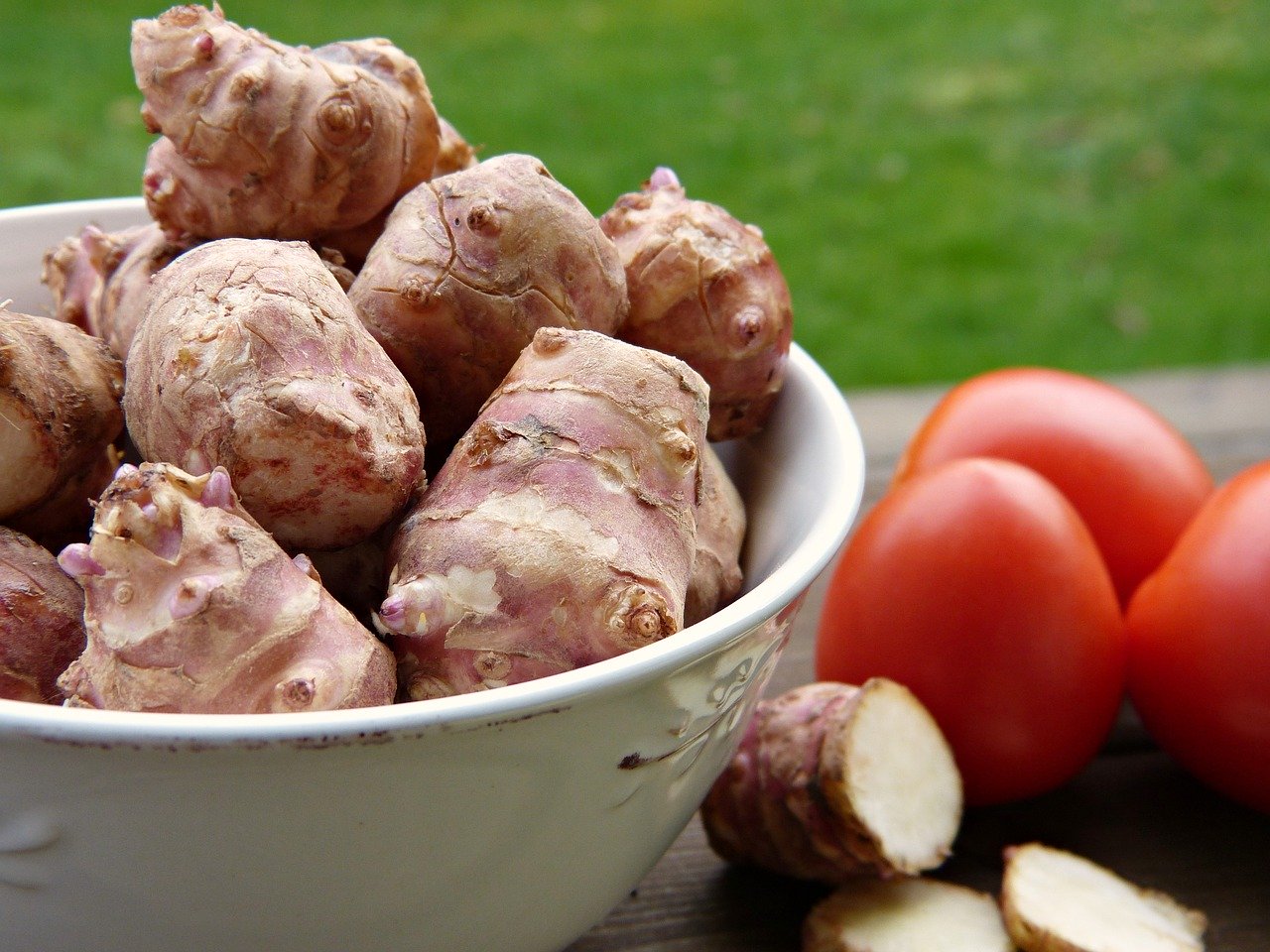
Wild rocket, Jerusalem artichokes and everlasting cabbage can also be grown in pots or tubs and overwintered.
- Wild rocket: There are no special measures for cultivation in a pot.
- Jerusalem artichoke: Choose a sufficiently deep pot, as the roots of the plant need some space. The pot should be in a place that is not too windy, as the shoots of the plant grow quite high and the pot can be knocked over more easily due to this large surface area.
- Everlasting cabbage: Cabbage also needs enough space in the pot to be able to spread out. Mix compost into the planting soil in the pot so that the cabbage is sufficiently supplied with nutrients.
Winter Protection for Perennial Potted Plants
Insulate your containers and pots in winter, as they cool down much faster than the soil. You can use polystyrene sheets around your containers as insulation material or place them in jute bags filled with leaves. Coconut mats are also suitable as protection against the cold. You can also cover the soil in the container with fleece or brushwood if you don't want to or can't harvest anything over the winter. It is best to place your containers close to the house wall, as they are much more protected there in winter than if they were standing freely.
Overwintering Herbs: What You Need to Know
Your herbs also have different levels of cold resistance. Here you can find out what you need to consider for which herbs.
Mediterranean Evergreen Plants That Are Partially Hardy:
- rosemary
- thyme
- sage
- oregano
- lavender
Protect the herbs by covering them with fleece or a tent if it gets very cold. If you have the herbs in pots, the same applies here: Insulate them and place them against the house wall! Read more about How to Winterize Your Raised Beds here. In April, you should cut these herbs back properly so that they sprout strong and healthy in summer.
Herbs That Overwinter and Go Dormant:
- chives
- lovage
- lemon balm
- mint
- tarragon
In very cold temperatures, you can cover the pruned shoots with mulch or brushwood.
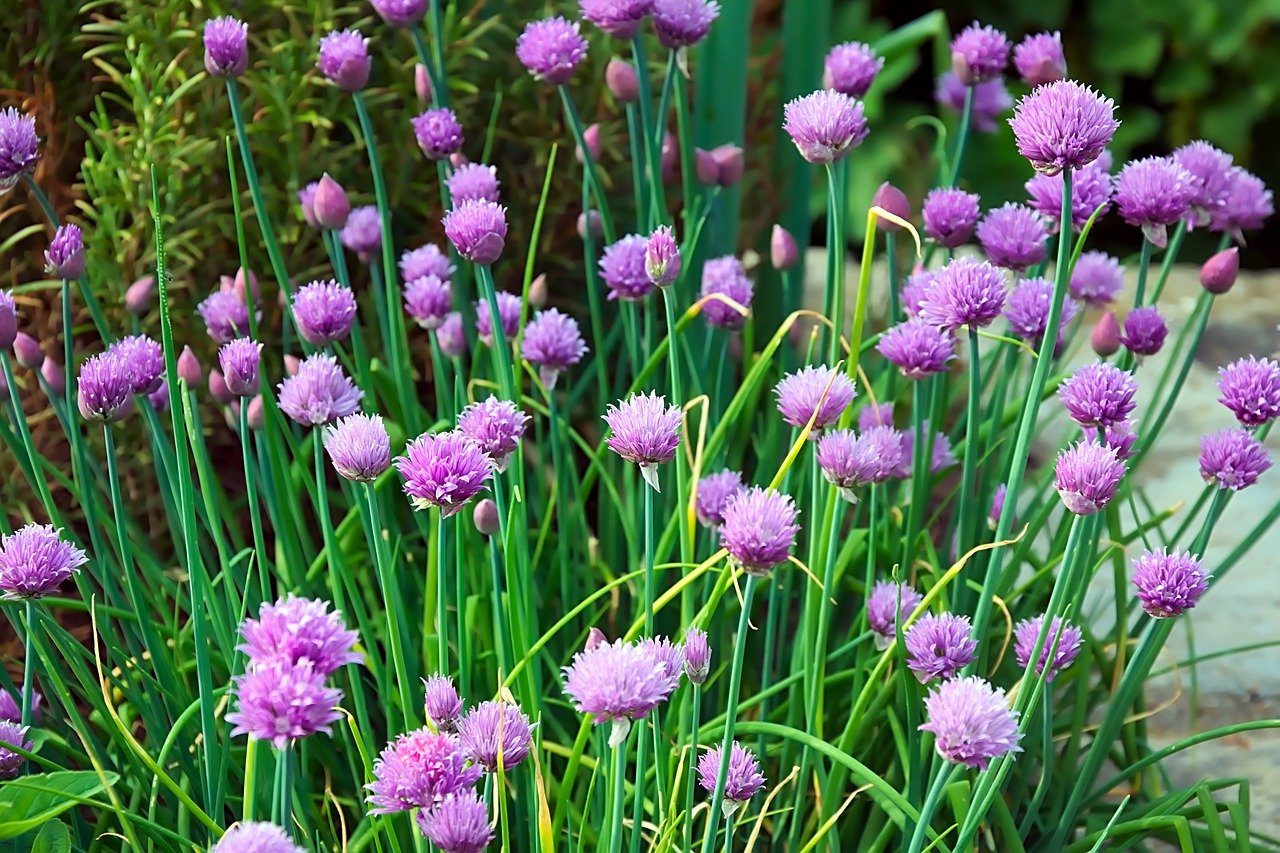
Non-hardy Herbs That Overwinter Indoors:
- Basil: in a bright place with temperatures between 15 - 20 °C/59 - 68 °F. Places such as kitchen windows, stairwell windows or cellar windows are suitable (as long as the cellar does not get too cold). Make sure the plant has sufficient moisture. But beware: waterlogging can cause disease!
- Lemon verbena: overwinter in a dark, damp and cool (frost-free: 0 - 5 °C/32 - 41 °F) place. A cellar or garage, for example, is suitable for this. You can place a bucket of water next to the herbs to ensure sufficient moisture. Before you place the lemon verbena in its winter quarters, cut it back hard.
Wintering Mediterranean Plants: Citrus Trees, Fig Trees & Co.
Citrus, olive and fig trees are used to milder conditions and therefore need to be brought indoors from the first frosts. It is therefore worth cultivating them in containers. In spring, the plants should be slowly acclimatized to direct light, otherwise the leaves may burn. To do this, first place the containers in partial shade for a few days. Then you can start with a few hours of direct sunlight.
Overwintering an Olive Tree: How to Do It
Wrap the olive tree well with fleece or brushwood and also protect the tub with appropriate insulation. Place the tub in a sheltered, roofed location (garage, carport). In a dark, cool place such as a garage or garden shed, the tree will usually shed its leaves. This should only be an emergency solution. The olive tree tolerates a place that is as bright as possible better in winter. A greenhouse or unheated conservatory with temperatures between 5 - 10 °C/41 - 50 °F is therefore also suitable. Watering is also recommended here, but waterlogging should be avoided at all costs as this damages the roots.
Overwintering the Fig Tree
In a sheltered spot, such as on the south side of a house wall, many fig tree varieties can even overwinter outdoors. Nevertheless, the younger the tree, the more sensitive it is to frost. For this reason, the plant is often kept in a tub for the first few years and then planted out. It is best to overwinter the fig tree in a tub in a bright and cool place, for example under a bright cellar window at temperatures of around 10 °C/50 °F. The tree will shed its leaves here. The tree will shed its leaves here. As an emergency solution, a slightly warmer stairwell or a cool living room can also be used. Above all, it is important that the tree is not too dark. In warmer places, however, there may be an increase in pest infestation, as the tree retains its leaves here. Tub plants can also be overwintered outdoors with fleece and brushwood in a sheltered place (house wall). The same applies to fig trees planted outdoors.
Successfully Overwintering Citrus Trees
In a light or dark place, without excessive temperature fluctuations. A cellar can be chosen as a dark place. You should water the citrus trees from time to time. A house or conservatory are suitable for bright locations, as long as the ambient temperature is reasonably constant. Lemon trees and co. need more water here than in a dark cellar. Check the plants in both locations for pests every few weeks.
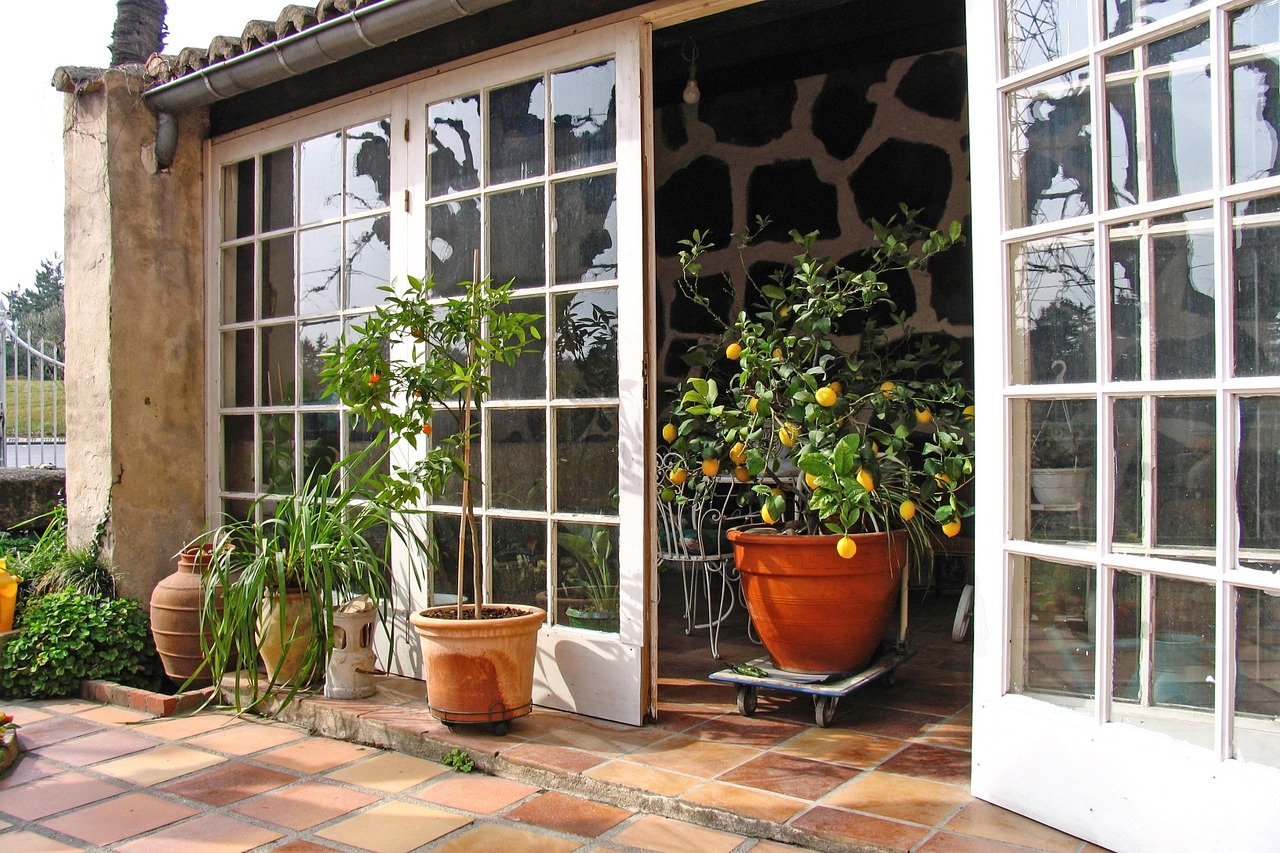
Excursus on Cold-Sensitive and Hardy Plants:
Plants that are sensitive to cold feel the same way as you do when you wear a jacket that is too thin in winter. Sure - they may not shiver and freeze like humans, but their biochemical processes are much less efficient when it's cold. Their enzymes, the proteins that accelerate (i.e. "heat up") all these processes, have an optimum temperature. If this is not reached, the enzymes cannot work efficiently. As a result, the breakdown or composition of a substance is much slower. All the processes in a cell then simply take too long, which means that the plant will die sooner or later. In addition, every cell has a membrane that encloses the cell contents. This is made up of a lipid layer (fatty layer), which is supple and flexible at warmer temperatures. Much like butter when you take it out of the fridge for a while. This membrane fluid is important for molecules that have to cross the membrane so that the cell can continue to work. It also ensures the necessary flexibility of a (plant) body. If you put the butter back in the fridge, it becomes viscous and solid. This also happens to the membrane of a supercooled cell. Molecules can no longer pass so easily from one cell to the other, which disrupts the entire work process of the plant. Plant cells are also filled with liquid, which can freeze at sub-zero temperatures. The cells are injured as a result and irreparably damaged when they thaw, whereupon they die.
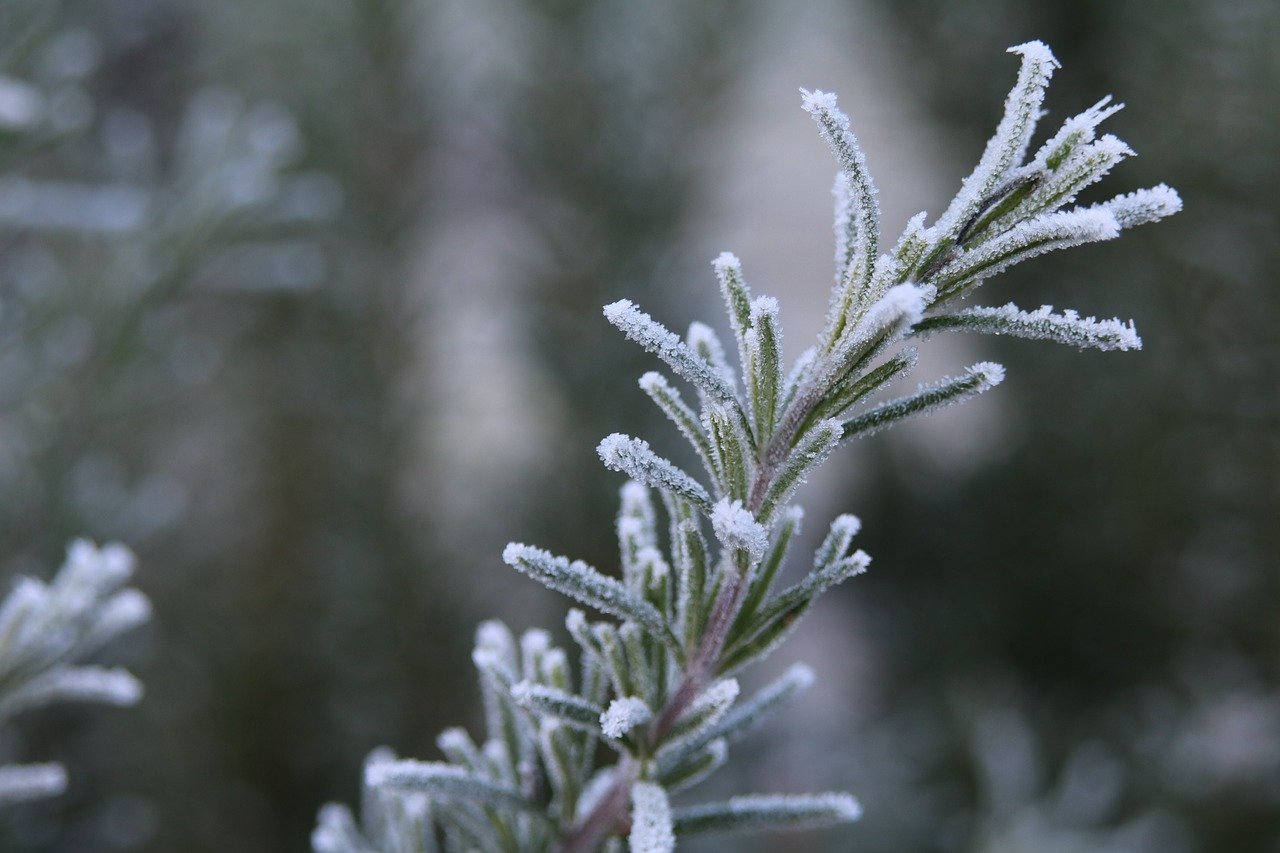
Hardy plants can partly avoid these problems because they have enzymes that can also work at low temperatures. Furthermore, proteins are built into their cell membranes, which counteract the viscosity at low temperatures. The fatty acids in the lipid layer are also linked by several double bonds, which is also known as unsaturation. These double bonds create small kinks in the spatial structure of the molecules. As a result, the fatty acids cannot attach to each other as easily as they would if they were straight (without double bonds and saturated). And this is precisely why the membranes remain more supple at low temperatures than without double bonds. Imagine olive oil and butter at room temperature. While olive oil remains nice and liquid, butter is still quite solid.
But it's not just the cold itself that can be a problem for plants. It is often the dryness caused by the frozen soil water. As ice, this can no longer be absorbed by the plants. As a result, many plants, especially hardy ones, dry out in sub-zero temperatures if they cannot manage their water well enough. This is a particular problem when the sun is shining and the plants actually want to photosynthesize. Because as some people may remember from biology lessons: Water is needed to produce sugar from sunlight!
I hope we were able to help you with overwintering your plants and answer your questions. If you have any questions or comments, please write to us at magazin@fryd.app.
Want to get helpful gardening tips all year round and plan your own beds in the best possible way? Then register here or download the Fryd app for Android or iOS.
Fryd - Your digital bed planner
Isabell
Current Topics in the Community

#red , #tuesday

Liked 1 times
#testpostcount

Dec 2025
Popular Articles

Companion Plants for Carrots: What (Not) to Plant With Carrots

Companion Plants for Celery : What (Not) to Plant With Celery?

Strawberry Types: List of Best Strawberry Varieties

Companion Planting With Strawberries: Companion Plants and Planting Plan

Basil Varieties & Types at a Glance

What to Plant With Cabbage: Good and Bad Companion Plants

Fertilizing Strawberries: Home Remedies & Natural Fertilizers at a Glance

Growing Sweet Potatoes: Tips on Cultivation & Companion Plants

Companion Plants for Kitchen Herbs: Chives, Parsley & Co

What Herbs Can Be Planted Together?
FAQ
Which plants overwinter at all?
Plants that have been growing in the bed for several years can overwinter. There are hardy plants that can overwinter in the bed without any problems. However, there are also frost-sensitive perennial plants that need winter and frost protection or even need to be brought indoors.
What are hardy plants that tolerate a lot of sun and need little water?
Hardy plants that tolerate a lot of sun and need little water include hardy Mediterranean herbs such as rosemary, thyme, sage, oregano and lavender. When choosing a variety, make sure that the plant is really hardy.
What are hardy plants for containers?
Hardy plants that you can also grow and overwinter in pots include Jerusalem artichokes, wild rocket and everlasting cabbage. Herbs such as rosemary, thyme and sage can also overwinter in pots.
Which plants can overwinter outside?
Hardy plants that also overwinter without problems in the bed are, for example, perennial cabbage, wild rocket, Jerusalem artichoke, rhubarb, asparagus and horseradish.